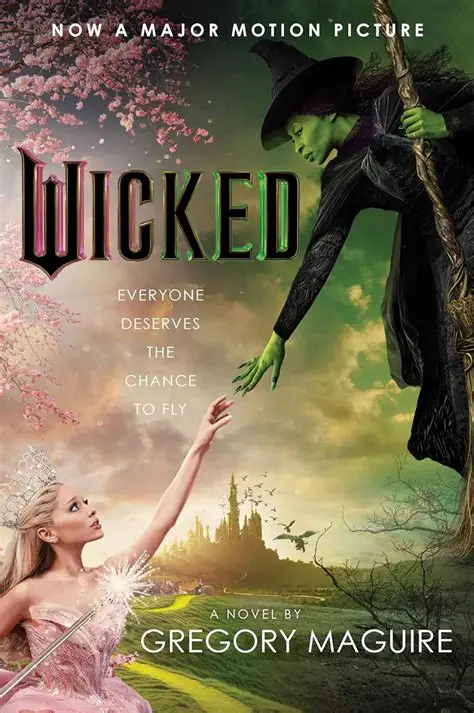
Wicked Book Summary
Introduction
Wicked: The Life and Times of the Wicked Witch of the West, written by Gregory Maguire in 1995, is a dark retelling of L. Frank Baum’s The Wonderful Wizard of Oz. Instead of presenting the Wicked Witch as a simple villain, Maguire explores her backstory, motives, and the complex politics of Oz. The novel is the first in The Wicked Years series and inspired the hit Broadway musical Wicked.
Main Characters:
- Elphaba – Born with green skin, intelligent, passionate, and misunderstood; she becomes the “Wicked Witch of the West.”
- Galinda/Glinda – Elphaba’s roommate at Shiz University, who later becomes Glinda the Good Witch.
- Nessarose – Elphaba’s younger sister, disabled from birth, later the Wicked Witch of the East.
- Fiyero – A prince who develops a complicated relationship with Elphaba.
- The Wizard – A manipulative ruler of Oz whose corruption drives much of Elphaba’s rebellion.
Detailed Wicked Book Summary
The story begins before Dorothy’s arrival in Oz and follows Elphaba, born with bright green skin and sharp teeth, marking her as different from birth. Her parents—an uncaring father and a religious mother—struggle to accept her. This early rejection shapes her into a fiercely independent and skeptical woman.
At Shiz University, Elphaba meets Galinda (later Glinda), a spoiled but charming young woman. Though they clash at first, the two eventually form a friendship. It is here that Elphaba also becomes aware of the political corruption of the Wizard of Oz, who discriminates against Animals (creatures with human-level intelligence).
Elphaba’s Rebellion
Outraged by injustice, Elphaba becomes an activist fighting for the rights of Animals. Her revolutionary spirit isolates her further, but it also defines her path.
She later becomes romantically involved with Fiyero, though their relationship is complicated by secrecy and tragedy.
Transformation into the Wicked Witch
As time passes, Elphaba’s actions, though rooted in justice, are twisted by propaganda. The Wizard and others paint her as a villain, while her true motives are misunderstood. Her reclusiveness, use of magic, and intimidating appearance solidify her reputation as the Wicked Witch of the West.
Meanwhile, her sister Nessarose gains political power in Munchkinland but rules with cruelty, reinforcing the family’s complicated legacy.
Climax and Dorothy’s Arrival
The story converges with the familiar events of The Wizard of Oz. When Dorothy’s house lands in Oz and kills Nessarose, Elphaba sees Dorothy not as a villain but as an innocent pawn in larger events. Still, her desperation to recover her sister’s magical shoes leads to her fateful confrontation.
Ultimately, Elphaba is defeated by Dorothy—cementing her legacy as the Wicked Witch, though the novel leaves open questions about morality, truth, and how history defines heroes and villains.
Themes and Analysis
- Good vs. Evil – Challenges the traditional labels of “wicked” and “good.”
- Identity and Otherness – Elphaba’s green skin symbolizes difference and prejudice.
- Power and Corruption – The Wizard’s regime highlights political manipulation.
- Friendship and Love – The bond between Elphaba and Glinda, and her romance with Fiyero, add depth to her character.
- Morality – Explores how intentions can be twisted by perspective.
Key Features
Retelling of Oz – A new perspective on a classic story.
Complex Anti-Heroine – Elphaba as a misunderstood figure.
Political Intrigue – A critique of tyranny and oppression.
Broadway Adaptation – Inspired the hit musical Wicked.
Why Read Wicked?
If you love fantasy novels with political depth, character-driven narratives, and a reimagining of beloved classics, Wicked is a must-read. It turns the tale of Oz upside down, asking readers to question what it really means to be “wicked.”
Find More Content on Notes IOE, Happy Learning!!
Do follow us on Instagram and Facebook to get the latest updates!